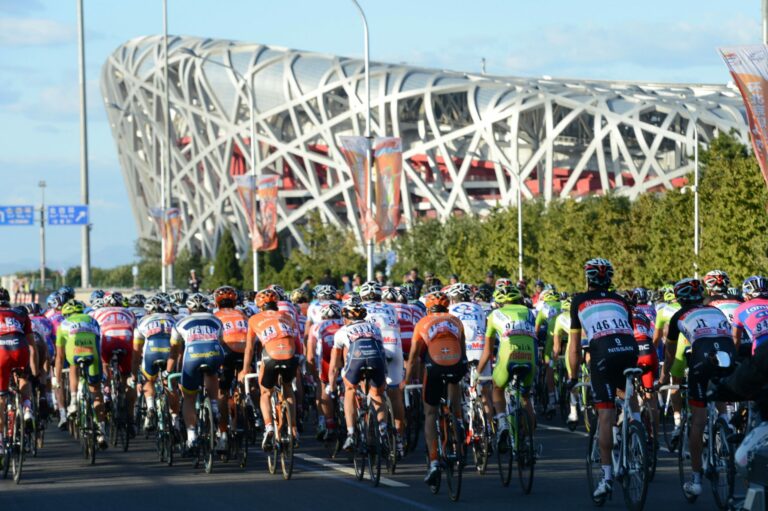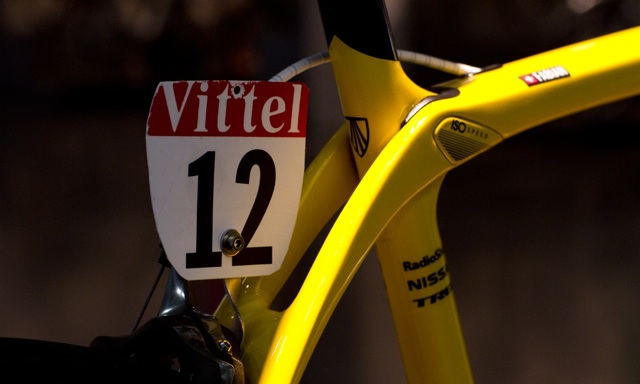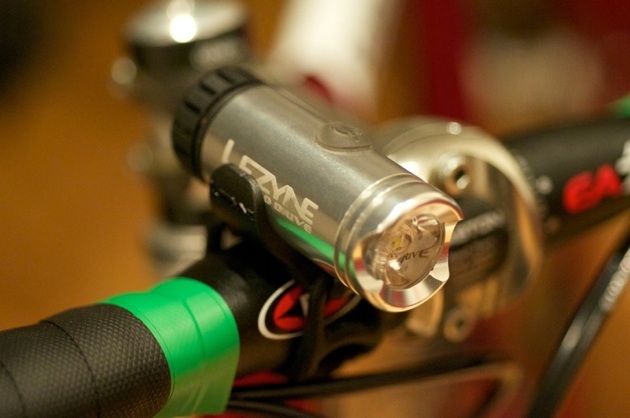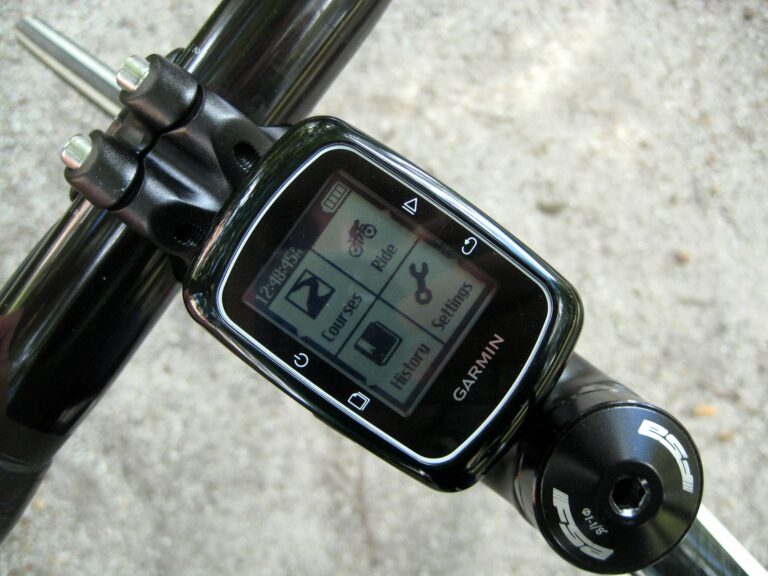Bicycle component manufacture is dominated by three big players: Shimano, SRAM, and Campagnolo.
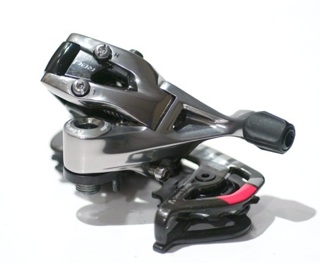 Each has released new groupsets this year. We’ve had a first ride on Campagnolo’s Athena EPS, and the 11-speed iteration of Shimano’s 9000-series mechanical Dura Ace groupset, on which we’re about to begin a long term test (stay tuned).
Each has released new groupsets this year. We’ve had a first ride on Campagnolo’s Athena EPS, and the 11-speed iteration of Shimano’s 9000-series mechanical Dura Ace groupset, on which we’re about to begin a long term test (stay tuned).
First from the blocks this year has been the new incarnation of SRAM’s flagship Red groupset, unveiled in February, glimpsed on our visits to the Tour de France on some of the WorldTour bikes in July (and even then, not on the bikes of all the SRAM-supplied teams), and seen in abundance at Eurobike a fortnight ago.
We’ve called in a Red groupset from Fisher Outdoor Leisure, SRAM’s UK distributor, on which we’ll be conducting an extended test in the months ahead.
SRAM arrived later in the road groupset market than their rivals, but have soon established a reputation as a viable alternative. SRAM Red has always been a showpiece groupset, one that performs markedly better than Rival and Force in our view (conversely, we would suggest that while Dura Ace and Ultegra are far apart in price, they are very similar in performance).
As mentioned above, the new Red groupset was unveiled in February. For that reason, we’ll be calling it Red 2012. We like to see bikes specced with a complete groupset, and for that reason we’ll be fitting all the components from 2012 SRAM Red groupset to the Test Rig.
The first thing to note is that SRAM have continued along the mechanical path with this their flagship road groupset, and not followed Campagnolo and Shimano by embracing the electronic age. This adherence to tradition (rationalized by SRAM in the name of weight reduction) has prompted some ingenuity.
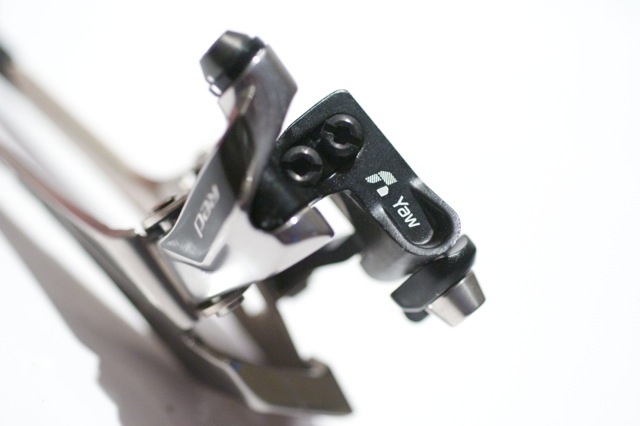
The major gripe with the old groupset was the front shifting. Not only did it drop the chain onto the smaller ring with a degree of ferocity, but it required trimming to keep the cage from rubbing on the chain. With SRAM retaining mechanical shifting, the auto trimming functions of electronic systems are unavailable. To combat this problem the boffins at SRAM have created a non-parallel parallelogram linkage [yikes! – ed]. This means that the shift cage tracks through an arc in a ‘yawing’ fashion which directs the front mech towards the cassette from the inner and outer rings. Tracking the direction of the chain line in this manner has removed the need to trim the front mech. Set up is eased by the laser etched markings on the cage so even the ham-fisted can get the slick adjustment free mech working properly. The slim line system weighs a scant 75g and includes the well integrated chain spotter, although we think that should really be called a chain stopper as it prevents the brutally fast front shift from dropping the chain down the gap betwixt frame and inner ring.
At the rear the ZeroLoss labelled system delivers super fast, very precise 3mm shift movements. The mech tipped our scales at 150g, assisted by a carbon cage and hollow titanium pinchbolt for the cable stopping duties. The B-knuckle has been increased to enable better clearance for larger cog sizes at the rear (this standard version will accommodate a cassette with 28 teeth). If you want to adopt the Contador-mimicking 32-toothed cassette, then the WiFli version is for you. The AeroGlide pulleys spin on ceramic bearings to keep resistance low. The whole unit is beautifully finished and impressively detailed. A few of the team here noted the rather elegant ‘fin’ shape that drips off the main body and protrudes just enough to hold the cable tangentially to the cable adjuster stop and allow it to curve smoothly to the titanium pinch bolt.

The shift levers have gained our admiration. Removing shifting from the tasks required of the brake levers has always made the carbon blades feel a degree more sturdy and positive to grasp in our view. The brake levers in this 2012 version have been made longer and have a more pronounced curl at the tips. Coupled with a slightly smaller diameter, and textured hoods for grip in the wet, these feel instantly secure and comfortable under the hand. The reach adjust bolts are as accessible as before and have been changed to hex rather than Phillips heads. The shift levers tickled the scales at a shade under 300g, a little more than the claimed 280g. The DoubleTap actuation has been considered inferior by some to the shifting mechanisms of SRAM’s rivals, but on a quick run up and down the cassette while in the stand, the new SRAM Red feels markedly different to Rival and Force (as usual), but also an easy match for Super Record and 7900 series Dura Ace. On the road testing will naturally tell us more.
The Exogram chainset is one of the lightest on the market at 625g. Earlier incarnations were considered by some to have too much flex for a flagship chainset. The spider and arm have both been revised in the latest iteration, keeping pretty much the same weight but with beefier crank arms and a marginally bigger centre section. This has apparently improved stiffness, and we certainly hope so, because the cranks and rings are visually stunning. Both rings are machined from single pieces of 5mm thick aluminum plate and have a distinctive two tone finish. As might be expected, the chainset is able to fit all the usual standards: GXP, PressFit, BB30 and PressFit 30 are all catered for. The bottom bracket supplied here remains the same as the current shaft and bearings so will no doubt be problem free.
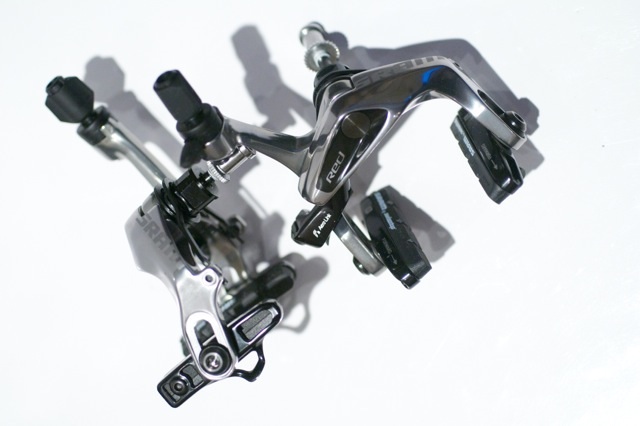
Braking was, in spite of the simplicity of the units, one of the strong points of the earlier versions of Red. The new versions are well manufactured. Whether we would describe them as truly aerodynamic is a separate matter, but the reduced frontal area and a slim profile certainly assists. The single bolt calipers are actuated by a cam assisted arm which improves power and feel, and, equipped with some fine SwissStop pads, these units weigh nearly the same as the mighty Bontrager SpeedLimits with which the Test Rig is normally equipped. Unlike the tight fitting SpeedLimits, however, these new offerings from SRAM have been designed with newer style rims with wide brake tracks in mind. We’ve found that sit comfortably around the bigger of the new breed rims from Enve and Zipp for example.
The chain is unchanged from the previous version and has the same perforated outer link plates, hollow pins and chamfered edges that have made it such a sterling performer. The PowerLock connecter remains a reliable method of joining a chain, and the ability to quickly fix, or remove a chain for cleaning is incredibly useful.
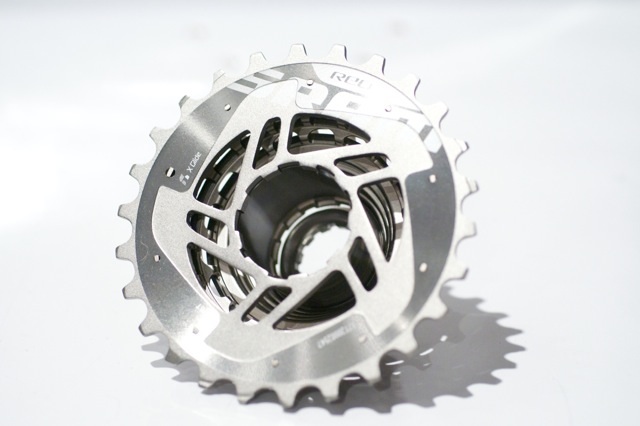
Finally the cassette has had a major overhaul and the acoustic chamber that was created by the nearly sealed collection of cogs has been revised. The largest cog, far from being a plate at the top of the cassette, is now a machined aluminum item. The central part of the set of cogs is still machined from a solid lump of steel but new elastomer bands sit between them. These deaden the sound of the chain as it drops onto a cog creating a quieter shift. Coupled with a few tweaks to the teeth position and profiles, and the SRAM Red shift system has become a whole lot more stealthy on the work stand. The long term test on this cassette will be interesting as the wear rate may have changed due to the additional scoops taken from between the teeth.
The 2012 Red may distinguish SRAM’s flagship groupset further from its rivals. It’s lighter even than it’s earlier incarnations, and by resisting the lure of electronic shifting, SRAM find themselves in sympathy with some of the world’s top riders, most notably Fabian Cancellara (although the RadioShack-Nissan-Trek team with whom Spartacus plies his trade are supplied by Shimano).
With no batteries to charge, we’ll be hitting the road to discover just how the new Red performs and reporting our findings in subsequent articles.

